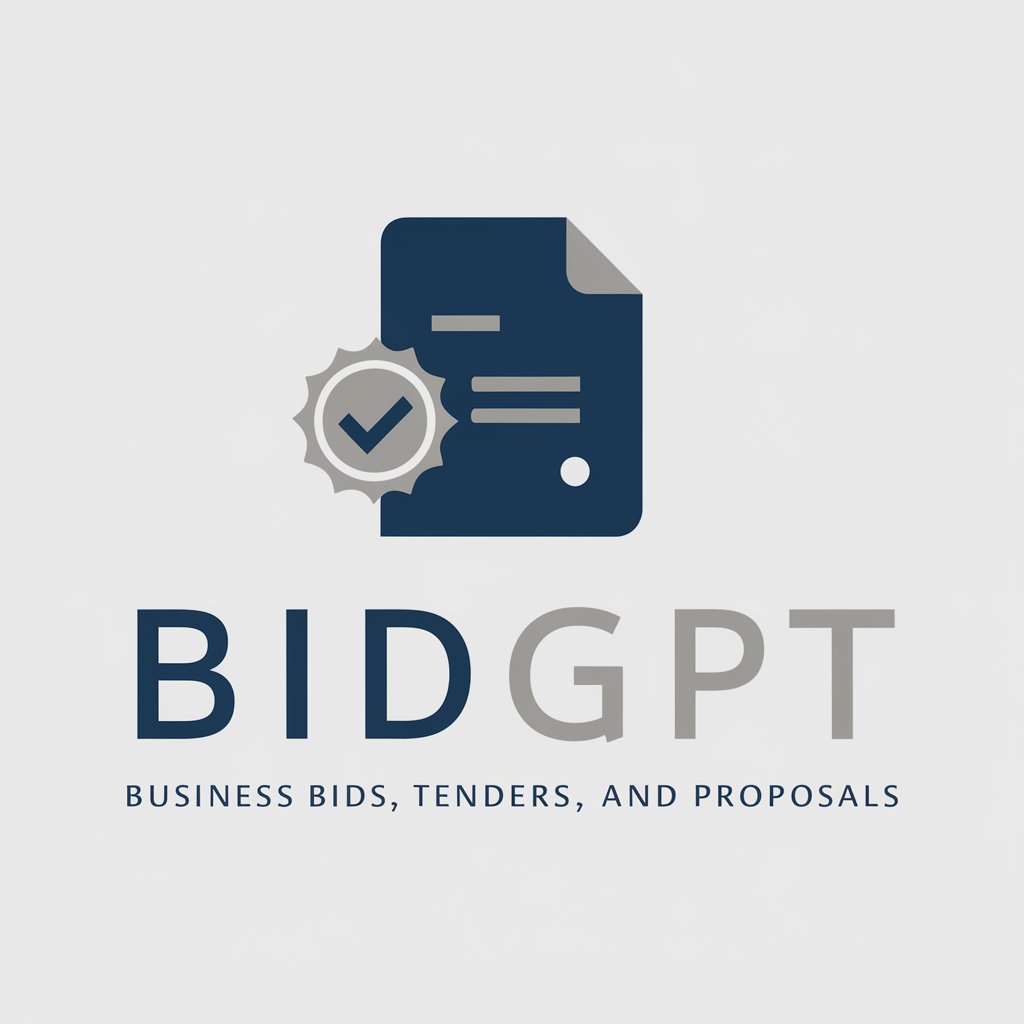4 GPTs for Tender Submission Powered by AI for Free of 2025
AI GPTs for Tender Submission are advanced artificial intelligence tools based on Generative Pre-trained Transformers that are specifically designed to assist with the preparation, submission, and management of tenders. These tools leverage natural language processing (NLP) to understand and generate text, making them particularly adept at handling the complex documentation and requirements often associated with tender processes. By automating parts of the submission and response process, they help organizations save time, reduce errors, and increase their chances of winning bids.
Top 4 GPTs for Tender Submission are: BidGPT,标书检查专家,Joindre votre CCTP + produits (Page de garde AO),Docummary
Essential Attributes and Functions
AI GPTs for Tender Submission exhibit a wide range of capabilities, from generating and editing tender documents to offering insights based on the analysis of past tenders. Features include language versatility, enabling the tool to operate in multiple languages, and adaptability, allowing it to handle various tender complexities. Technical support, web searching capabilities, image creation for visual submissions, and data analysis for tender optimization are also key features. These tools are designed to be highly customizable, catering to the specific needs of tender submissions.
Who Can Benefit
AI GPTs for Tender Submission are ideal for a broad audience, including novices in the tendering process, developers looking to automate and streamline submission tasks, and professionals in procurement and sales seeking to enhance their tender success rates. The tools are accessible to those without coding skills, offering a user-friendly interface, while also providing advanced customization options for users with programming knowledge.
Try Our other AI GPTs tools for Free
Proposal Enhancement
Revolutionize your proposal writing with AI GPTs for Proposal Enhancement. Leverage advanced AI to craft, refine, and optimize your proposals, ensuring they are persuasive, relevant, and of the highest quality.
Tender Analysis
Discover how AI GPTs for Tender Analysis revolutionize procurement with advanced AI, offering efficient, accurate tender management solutions for professionals across industries.
Project Decision
Discover how AI GPTs for Project Decision revolutionize project management with tailored AI solutions, enhancing efficiency and decision-making across industries.
Opportunity Assessment
Discover how AI GPTs can transform your opportunity assessment process, offering deep market insights and strategic foresight with user-friendly tools tailored to your industry needs.
Van Selection
Discover AI GPTs for Van Selection: your AI-powered assistant for tailored van recommendations, comparisons, and purchase guidance, designed to simplify your decision-making process.
Travel Strategy
Discover how AI GPTs for Travel Strategy revolutionize travel planning with personalized itineraries, real-time advisories, and comprehensive insights, making travel more accessible and enjoyable.
Further Exploration
AI GPTs as customized solutions offer significant advantages across various sectors, enhancing tender submission processes through user-friendly interfaces and seamless integration capabilities. They adapt to specific industry requirements, ensuring that every tender submission is optimized for success.
Frequently Asked Questions
What exactly are AI GPTs for Tender Submission?
AI GPTs for Tender Submission are specialized AI tools designed to automate and improve the tendering process, using language processing to assist with document generation, submission, and analysis.
How do these tools help in the tender submission process?
They streamline the creation and management of tender documents, improve accuracy, and analyze past submissions for better future responses.
Can AI GPT tools generate tenders in multiple languages?
Yes, one of the core features is their ability to understand and produce text in multiple languages, making them suitable for international tender processes.
Do I need programming skills to use these AI GPT tools?
No, these tools are designed to be user-friendly for those without coding skills, though they also offer customization options for those with technical expertise.
Can these tools integrate with existing procurement systems?
Yes, AI GPTs for Tender Submission are often designed with the capability to integrate with existing procurement and management systems to streamline the tendering process further.
How secure are AI GPT tools in handling sensitive tender information?
These tools are built with advanced security features to ensure that all tender documents and data are handled securely, with adherence to data protection regulations.
Are there any sectors where AI GPTs for Tender Submission are particularly beneficial?
While beneficial across various sectors, they are especially valuable in construction, IT, healthcare, and government contracting, where tendering is frequent and complex.
How do I choose the right AI GPT tool for my tender submission needs?
Consider factors such as language capabilities, integration options, ease of use, customization abilities, and specific features relevant to your tendering process.



